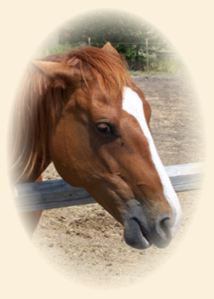Cross–Train Your Horse

Although not every horse can become a dressage specialist, every horse can benefit from dressage training.
The above quotation expresses the major theme of Jane Savoie's Cross–Train Your Horse as well as the companion volume More Cross–Training. The first three chapters of the first book are filled with examples of people and horses from various disciples—cross–country, barrel racing, cutting, endurance, jumping, driving—who incorporate the principals of dressage in their training.
According to the American Horse Show Association (AHSA) rule book, the ultimate purpose of dressage is the harmonious development of the physique and ability of a horse. It makes a horse calm, supple, attentive and keen, thus closer to achieving perfect understanding with his rider.
Jane Savoie says that, with proper dressage training, “…you can give back to the horse that is being ridden the beauty of movement he has when he's at liberty.” She adds: “Cross–training with dressage enables you to become your horse's physical therapist, so you can loosen, strengthen, unlock, unblock, supple, rebalance, and teach your friend to carry himself.” In addition, “…proper physical training can prolong your horse's useful years.”
While the second cross–training book is meant to build on the first, this first book alone can be of great help to most readers. The book sets forth the principals of dressage training and presents ways of achieving good form in the basic paces and movements important in the development of any horse.
Jane Savoie presents the golden rules of training as: Clarity, Consistency, and Kindness. She emphasizes the importance of praise. When the horse does something right, praise him: “…it will take him much longer to understand what you want if you skimp on the praise.”
While stressing the use of praise, the author admits that there is a time for punishment. She emphasizes that “…the word ‘punish’ does not imply severity [brutality] in any way.” She speaks of punishment as “a few taps with the whip or several sharp kicks” but adds: “…you should modify the severity of the punishment for the sensitive soul.”
The rider, says Savoie, should understand “aids” as “aiding” or “helping” the horse to understand rather than as rigid “commands”. In this regard, she stresses that proper training takes time. Think in terms of months and years, not days and weeks.
The author points out that “…experts abhor shortcuts and quick–fixes that are detrimental to both the mental and physical well–being of their animals.” She stresses: “by taking shortcuts and focusing primarily on the ‘head–set’, you create a horse who can't balance himself correctly. Specifically, the balance is on the forehand rather than on the hindquarters where it should be.”
When training is correct, the basic paces always improve. When training is incorrect for whatever reason—harsh gadgets, “front to back” riding that focuses on the position of the horse's head and neck and ignores the hindquarters, shortcuts—the quality of the paces degenerate.
The trainer should allow the horse time to develop understanding of a movement as well as the strength to perform it easily. Savoie emphasizes: “…if you're having difficulty with a particular movement or exercise, the cause of the problem is almost always found as a fault in the Basics.” Cross–Train Your Horse deals with understanding and applying the Basics. It also deals with using the Basics to correct faults in a horse's movements.
Dressage can take the most common animal as well as the truly gifted athlete and help both of them to move more expressively.
Buy Cross–Train Your Horse: Book One: Simple Dressage for Every Horse, Every Sport (Bk. 1)